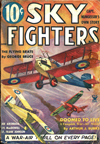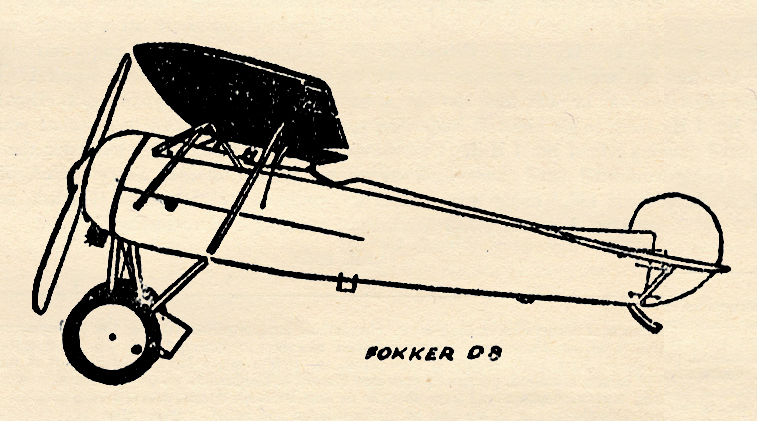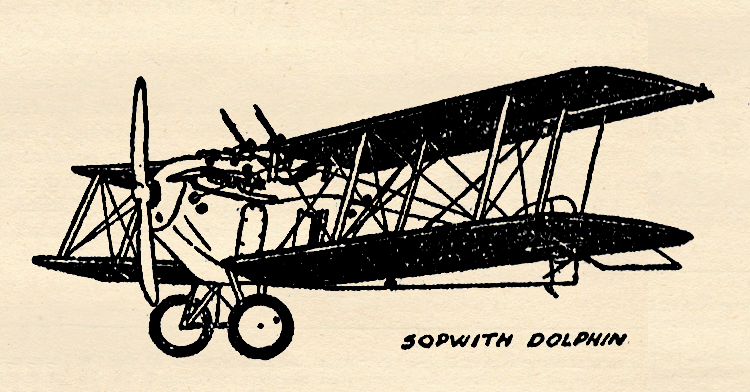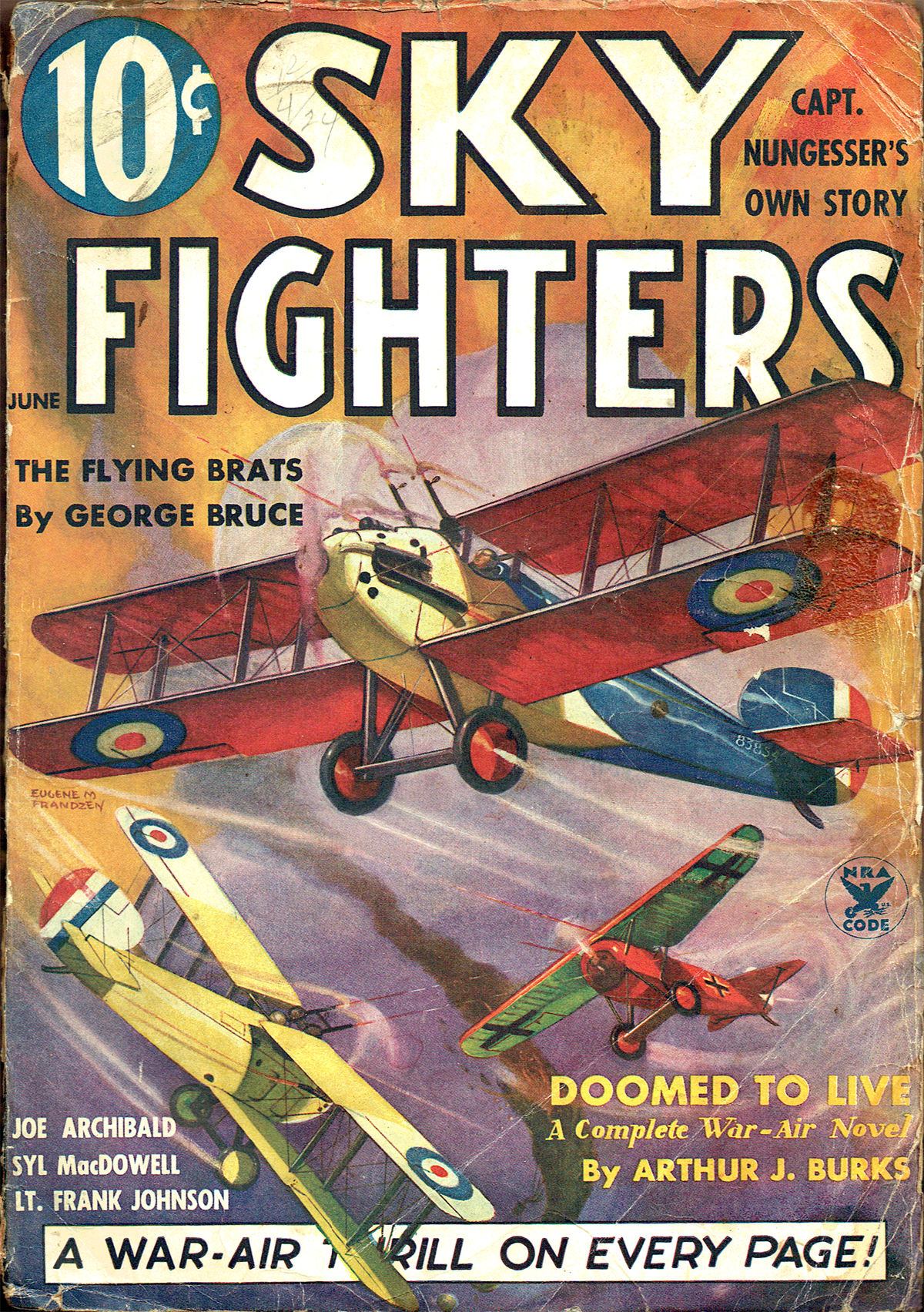“Sky Fighters, June 1935″ by Eugene M. Frandzen
Eugene M. Frandzen painted the covers of Sky Fighters from its first issue in 1932 until he moved on from the pulps in 1939. At this point in the run, the covers were about the planes featured on the cover more than the story depicted. For the June 1935 cover, Mr. Frandzen features the Sopwith Dolphin and the Fokker D VIII!
The Ships on the Cover
TWO of the last ships to  get into the air to swap lead in the World War were the Fokker D8 and the Sopwith Dolphin. The Dolphin had four exposed machine-guns, two Vickers shooting through the propeller arc and two Lewis guns shooting over the top of the arc at 45 degrees. The Dolphin’s pilot had good visibility with his top wing cut away and his office parked directly beneath this opening. His vision depended only on how far he could swivel his neck without putting it out of joint.
get into the air to swap lead in the World War were the Fokker D8 and the Sopwith Dolphin. The Dolphin had four exposed machine-guns, two Vickers shooting through the propeller arc and two Lewis guns shooting over the top of the arc at 45 degrees. The Dolphin’s pilot had good visibility with his top wing cut away and his office parked directly beneath this opening. His vision depended only on how far he could swivel his neck without putting it out of joint.
The Fokker D8, also known as the “Flying Razor,” was Fokker’s last contribution to Germany’s air fleet. He built it around an Oberursel motor because he could not depend on delivery of the Mercedes motors which he had used in his famous D7.

These Oberursel engines had been kicking around for months before Fokker finally in desperation figuratively jacked them up and built planes around them. Not many of these planes got to the front, but those that did, were used to good advantage. Udet, the famous German Ace flew the D8, and liked it. It was not as fast as Fokker would have liked because of the limited power of the rotary in its nose. But its ability to maneuver like a streak of greased lightning got it places where it could do things quicker than some planes with greater power which answered to their controls sluggishly.
Many Balloon Victories
Balloon busting was not confined to such sharpshooters as our own Frank Luke or Belgium’s Willy Coppens. Scattered through the official records of the Allies are scores of balloon victories chalked up to the credit of its flyers. Each of those downed bags represented a drain on the Kaiser’s money bags up to as high as $100,000. Therefore, the balloon falling in flames put a dent equal to from three to six war planes in the German finances.
As the Germans entered the last year of the war their supplies for making their kite balloons, or drachens, was at a premium. Where, in the early war stages, a half dozen of the cumbersome observation bags could be seen strung along four to six miles behind their lines, now only an occasional balloon floated.
“Blind the German’s observation,” was the terse order issued to all Allied armies.
By telephone, wireless, and despatches, this command raced along the lines. Long range guns poured streams of whistling shells into the skies. Their hits were few and far between. The ammunition wasted could have flattened mountains. The gunners gave up and watched tiny specks far up in the skies darting past, fading into the smoky war haze and disappearing over German territory.
Racing Through the Blue
Spads, Nieuports, Bristols, Moranes, Sop Camels, S.E.5’s raced through the heavens. Then the new Sopwith Dolphins flashed their black-staggered wings against an orange sky. Hisso motors yanked them toward a mountainous section where a German balloon had been floating unharmed for months. The massive gas bag was swaying swiftly down to its retreat between rocky crags as the Sopwith tipped their stubby noses down and blazed incendiaries into it. Smoke, then flame belched forth as the porcine mass writhed, collapsed and sank.

Two small monoplanes, one climbing rapidly. Another, diving, bracketed the Dolphins. Incendiary bullets were in the Sops’ Vickers belts, bullets that are outlawed for warfare against man. Down tipped the nose of one Dolphin, up went the prop of the other. Lewis guns bucked in their mounts, streams of orthodox bullets connected the enemy plane with the Dolphins. Two black-crossed monoplanes, “Flying Razors,” staggered in their flight. Blunted and dulled, they fluttered like discarded razor blades pitched from a roof, down into the purple haze of oblivion.

Sky Fighters, June 1935 by Eugene M. Frandzen
(The Ships on The Cover Page)
Next time, Mr. Frandzen features the Spad 22 and 13 C1!




